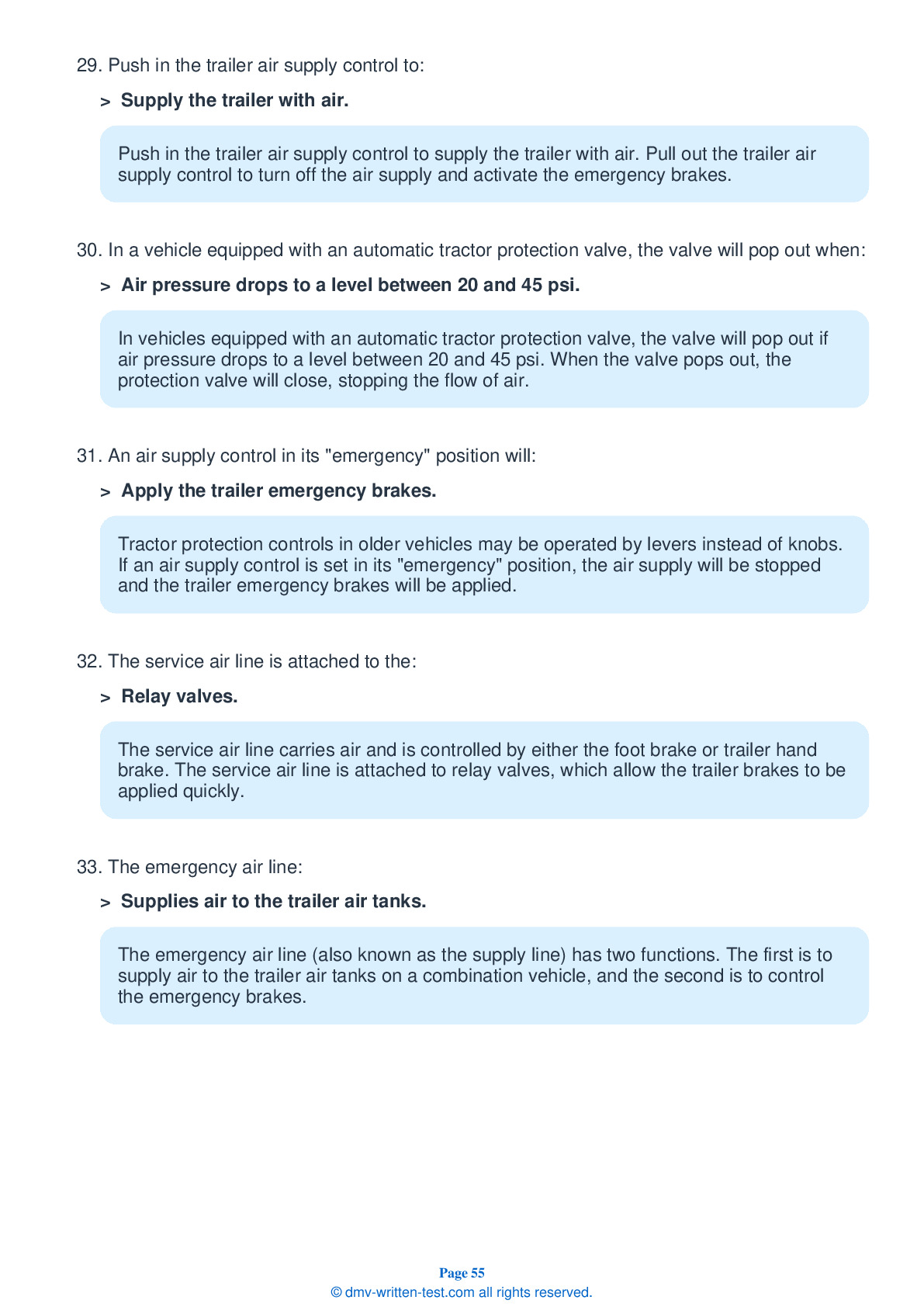Combination
All applicants who are applying for a Class A CDL should be prepared to take the Combination test. This test covers information found in Section 6 of the Washington State Department of Licensing Commercial Driver Guide. Section 6 provides the information needed to safely operate tractor-trailers, doubles, triples, and straight trucks with trailers. The test is made up of 20 multiple-choice questions, and applicants will need to correctly answer a minimum of 16 questions to pass. The Combination test is not a replacement for the Double/Triple endorsement test.
Number of Question
Passing Score
1. Before a trip, you can make sure air flows to all trailers by:
Explanation
Before a trip, ensure that air in the air brake system reaches all trailers. Do this by waiting for air pressure to build, then sending air to both the emergency and service lines and opening the shut-off valves on the rear of the last trailer. If air escapes from the shut-off valves in the rear of the combination, the air is being supplied to the entire vehicle.
2. What is a bobtail tractor?
Explanation
Tractors without semi-trailers are referred to as bobtail tractors. Operating a bobtail tractor requires drivers to exercise caution.
3. Older trailers are not equipped with spring brakes. This means that if the air supply for a vehicle's air braking system leaks away:
Explanation
Older trailers do not have spring brakes. This means that if the air supply in an older trailer's air tank has leaked away, there will be no working brakes connected to the trailer and its wheels will turn freely.
4. When braking with ABS, you should:
Explanation
When operating a vehicle with an Anti-Lock Braking System (ABS), you should apply your brakes in the same manner as you would if operating a vehicle without ABS.
5. A driver should test the tractor protection valve by:
Explanation
You should test the tractor protection valve by allowing the air supply to properly charge, turning off the engine, then releasing air from the system by pressing the brake pedal several times. The tractor protection valve should move into its emergency position when psi drops to an unsafe level.
6. If an air supply control is in its "emergency" position:
Explanation
Tractor protection controls in older vehicles may be operated by levers instead of knobs. If an air supply control is set in its "emergency" position, the air supply will be stopped and the trailer emergency brakes will be applied.
7. After completing a pre-trip inspection, you should ensure that the:
Explanation




